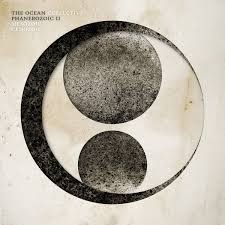
Founded twenty years ago, German progressive metal band The Ocean has experimented with a variety of album concepts, from astronomy to existentialism. In 2018, The Ocean debuted the first installment of Phanerozoic, Palaeozoic, taking listeners on a journey beginning with the Cambrian explosion and which left off at the pre-Triassic mass-extinction. Palaeozoic set a high bar for its latter counterpart, the newly premiered Phanerozoic II: Mesozoic | Cenozoic, which is set to cover the rest of history up to today.
“Triassic,” the first track on the album, feels barren, very much like the emptiness of a world after a mass extinction. What was most impressive about “Triassic,” and many of The Ocean’s works, is the transitions from tranquil to heavy. While many bands struggle to find smooth transitions between sounds, The Ocean manages to do so effortlessly and very artistically. In particular, the first transition was very beautifully done– the bass accompanied by the drums in the beginning of the song created a very natural transition into the vocals.
This album has many interesting and prominent bass lines to offer, and “Jurassic | Cretaceous” is no exception. While other bands may struggle to incorporate the bass without guitars, The Ocean, this track in particular, manages to harness the best qualities of basses and incorporate it in a way where the bass line becomes a central feature of their music. The addition of brass to the heavy drums and bass was particularly memorable, adding a unique drama and grandiosity to the song. While definitely not a short track by conventional standards, “Jurassic | Cretaceous” did not bore. It did the opposite and proved to be an excellent and vibrant track.
“Palaeocene” wasted zero time before diving into heavy guitar riffs and screaming vocals. I felt that they wanted to create an evil atmosphere, but in some ways “Palaeocene” felt a little lackluster. While it managed to capture the artistry that many artists who focus on heavier music fail to create, “Palaeocene” would have been an even richer track if it was even heavier. “Eocene” contrasts starkly with the “Palaeocene”, offering a much calmer and relaxed sound. It had many unique textures to the track, all layering to create a strange, grimly tranquil sound.
“Oligocene” is an all-instrumentals track, and its purpose was to transition from the heavier Mesozoic part of the album to the Cenozoic album. While it is shorter in length and without vocals, “Oligocene” was an extremely valuable addition to the diversity of Phanerozoic II: Mesozoic | Cenozoic. While the sound itself was not heavy, “Oligocene” felt ominous, dark, and anticipatory and smoothly glided into “Miocene | Pliocene.”
“Miocene | Pliocene” took a slower, almost cautious pace and felt as if it could burst into a heavy explosion at any second. However, the song took a much more melodic and much less heavy turn than the beginning of the song suggested. “Miocene | Pliocene” had some of the catchiest melodies on the album and while the song did take an unusual turn, “Miocene | Pliocene” did not feel lacking in any way.
“Pleistocene” offers metal vocal fries and blast beats but also soft and delicate syncopation, and the transitions in between are so seamless they may as well be invisible. And lastly, the album ends with “Holocene,” our current era, and puts particular emphasis on the cruelties of humanity. Lyrically, it may be the strongest on the album and circles back to the beginning mantras in “Triassic.”




































